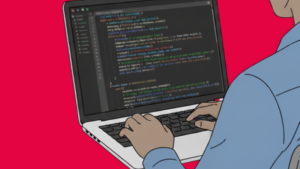
Making AI simple: How it can quickly add value to border security
Club Executive Clayton Smith says implementing AI needn’t be complex and gives an example of how Zaizi demonstrated its effectiveness in improving border security.
Nelson Mandela once said: “It always seems impossible until it’s done.”
This quote resonates with me. During my time in government, I’ve heard several officials and leaders say things like:
“That can’t be done.”
“We tried that before.”
“Great idea, but it will never get sign-off.”
I’m proud to say that challenging these perceptions in my previous policy, operational and delivery roles has resulted in some of the most successful programmes and outcomes I’ve seen delivered in and for the UK government.
This approach has helped me shape how Zaizi supports and delivers border security projects and programmes for Border Force and the wider Home Office.
The “we can’t do it” culture can be particularly strong when it comes to innovation and implementing technologies like Artificial Intelligence (AI) and Machine Learning (ML), especially in sensitive areas such as border security.
The use of AI and ML has been long recognised as a hot-button issue for border security and trade facilitation. Countries like the US, Australia, and the Netherlands are already inspecting cargo faster and more efficiently with AI enhanced x-ray screening.
This has the dual impact of accelerating cargo processing times, while increasing contraband and fraud detection rates.
Watch webinar: Find out more about this project and how other government organisations kickstart their AI initiatives
They’re also going further and using AI analysed datasets to identify patterns which can predict and mitigate future threats.
The UK borders are dealing with an increasing number of people and goods crossing the border. At Zaizi, we thrive on helping the UK Government solve such challenges, so when an opportunity came knocking we rose to the challenge.
Border Force’s AI project
We recently were part of a consortium of experts sourced via the Accelerated Capability Environment (ACE) community to collaborate with Chino Nwachukwu from Border Force and other partners; in exploring the potential of AI and ML techniques in a variety of border security challenges.
Zaizi and AI specialist CargoSeer took a bold approach to the project, targeting the broadest possible range of use cases for AI at the border — using computer vision and anomaly detection to automate processes. Inevitably, our mindset and approach were central to the success of this project.
This was an intricate and exciting task and it allowed us to do what any trusted partner for government should do: evaluate the current landscape and apply new technical capabilities to help realise benefits quickly.
The goal was to reduce pressure, risk and time at the border; enabling Border Force staff to do what they do best, where they need to do it. Our proof of concept models demonstrated how Artificial Intelligence could add significant value to an already-effective operational environment and drive further efficiencies.
By the end of the project, we combined Cargoseer’s AI engines with our own workflow technology, building rapidly deployable apps in the Home Office design system. This allowed us to demonstrate a complete solution and provide a detailed plan to tackle a meaty border security problem.
We delivered the 12-week project to time, cost and quality because, we:
- had clarity from Border Force on the requirements and the definition of done
- leveraged pre-developed technology stacks, purpose built for this project
- used a tiny team of experts to deliver quicker and minimise costs; bringing in more Zaizi expertise when required.
The future of border security with AI
There are a range of scenarios in which AI and ML can play significant roles in enhancing border security; such as Data Fusion and Integration, Risk Assessment and Prioritisation, Document Verification, Cargo Inspection, Border/Landscape Monitoring, Threat Prediction and Identification, Pattern Recognition, Case Work Processing, Audio and Visual Analysis, etc.
In this case, we were limited to specific use cases. We did a thorough job taking into full consideration the end-to-end user journey, operational challenges and ethical considerations in our solution design.
The scenarios listed above highlights the opportunities open for exploration or exploitation, and depending on your experience with this technology, you’ll probably be excited, apprehensive, fearful or a flavour of all three.
While I’m not an AI expert, my exposure to the technology and by speaking to our clever technologists, I see that AI is most effective when applied carefully and responsibly with proper oversight and management.
So yes, AI doesn’t have to be costly, complex or take long to implement. “It can be done” — you just need the right mix of experts, clarity on your goal and specific use cases to enhance your operations.
We’re happy to showcase our work — reach out if you’d like to see a demo of our AI solutions.
-

Modernising government for AI: What key challenges do departments face?
-

PICTFOR roundtable: Is regulation a handbrake or a catalyst to public trust and innovation in AI?
-

Beyond blueprints: Making government transformation real
-

How CyberFirst interns shaped Zaizi’s AI training programme
-

All green! Why passing the government Service Standard assessment matters more than ever
-

Which AI workflow works best to train public sector developers? Our Cyberfirst interns find out
